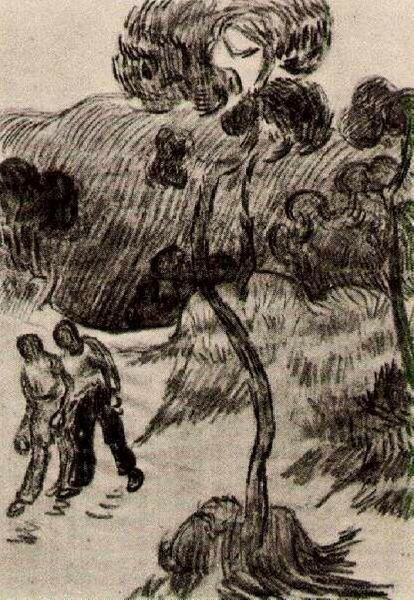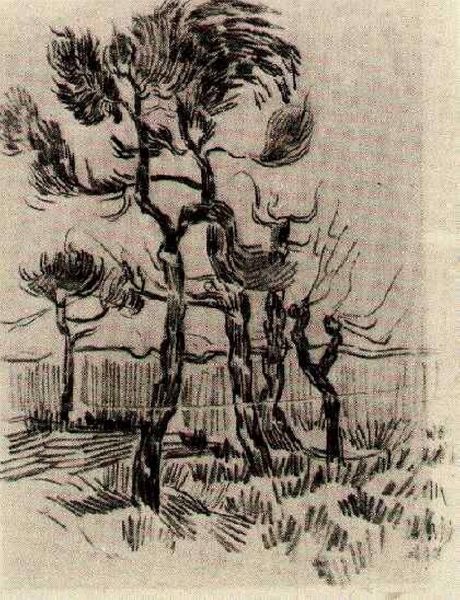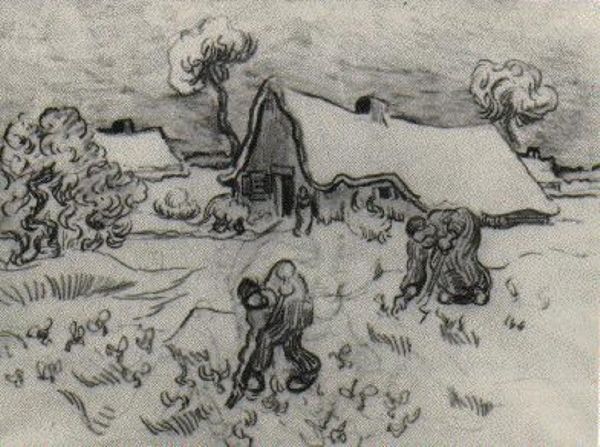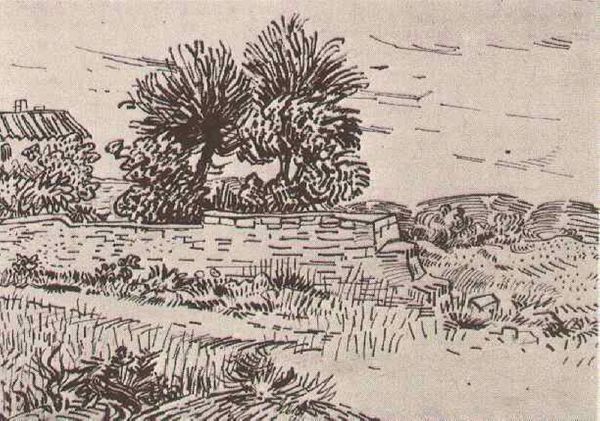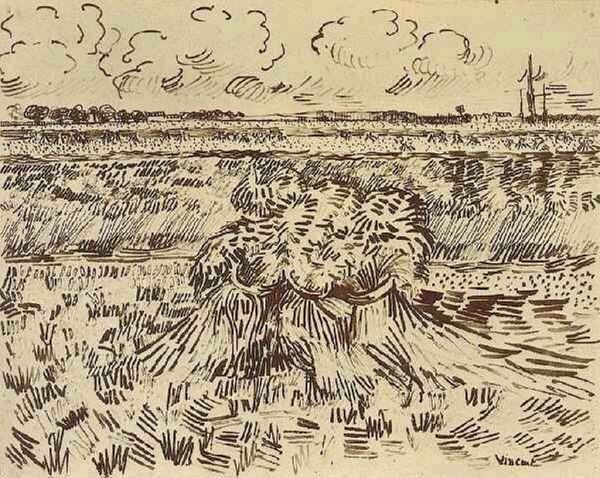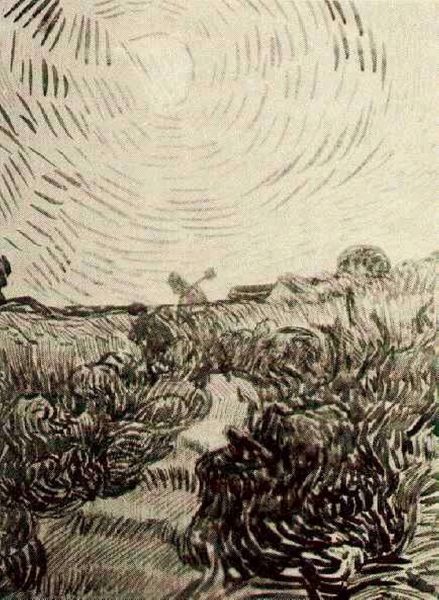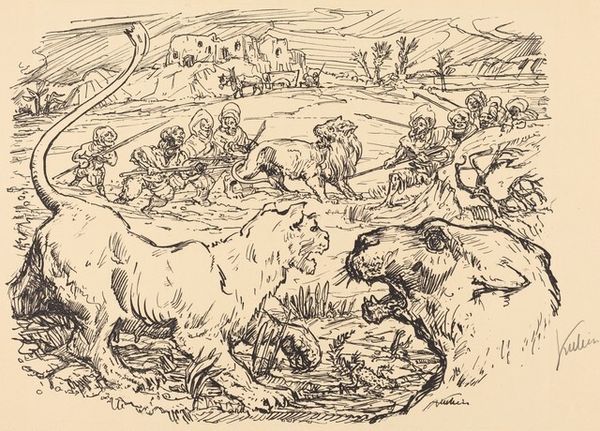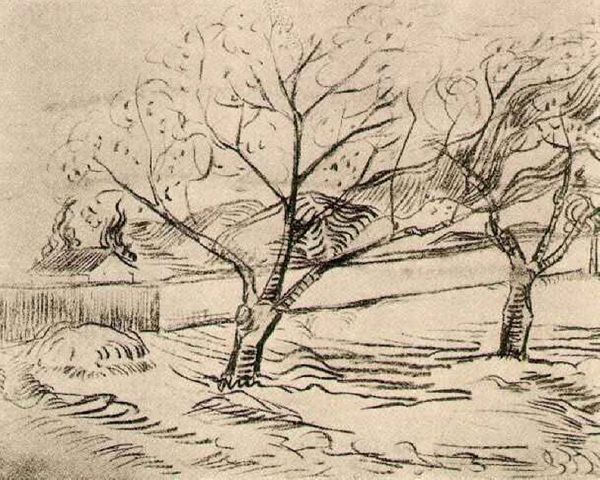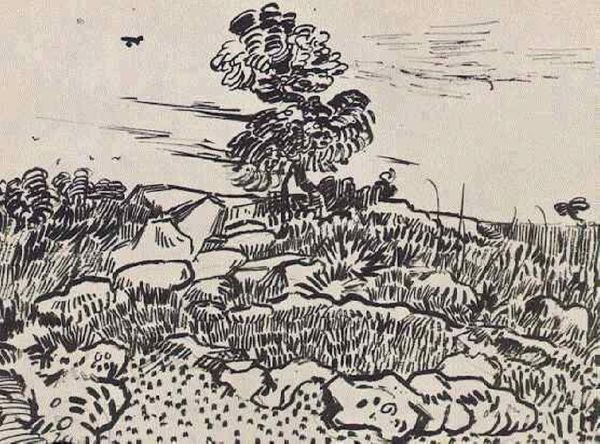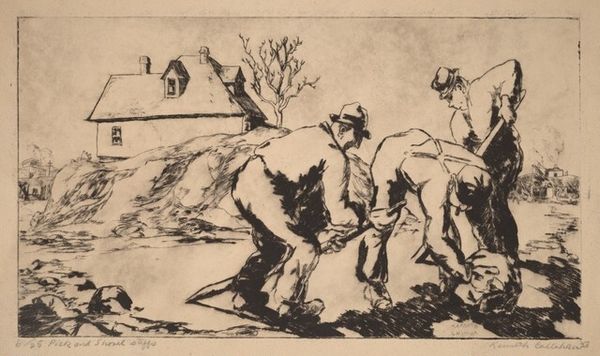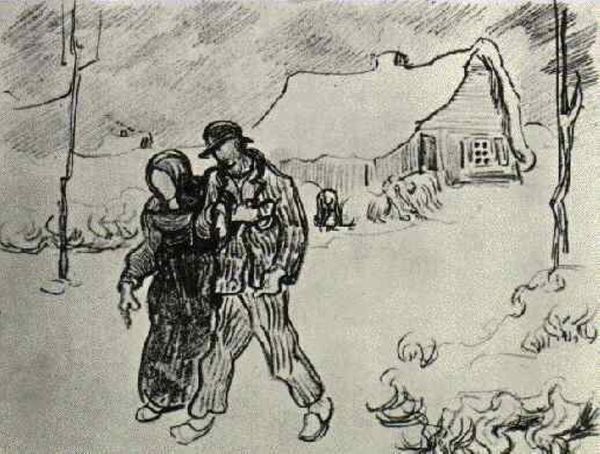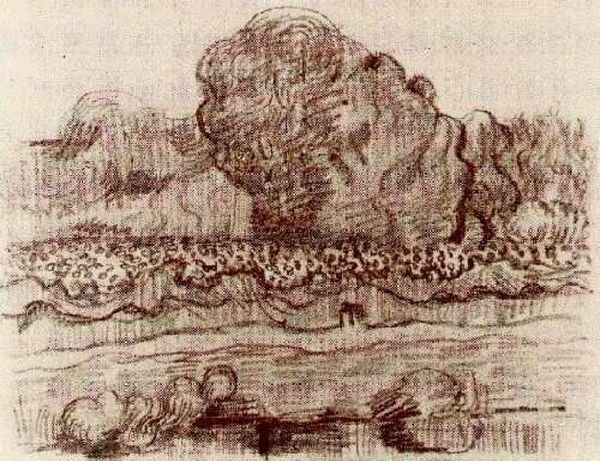
drawing, graphite
#
drawing
#
landscape
#
folk-art
#
graphite
#
genre-painting
#
post-impressionism
#
realism
Copyright: Public domain
Curator: We are looking at "Peasant Woman Digging," a graphite drawing created by Vincent van Gogh in 1890. Editor: The first thing that strikes me is the palpable sense of toil, the weariness etched into the figures' posture. You can almost feel the grit and sun beating down. Curator: Absolutely. It evokes a deep connection to the land. Van Gogh, throughout his career, consistently returned to images of peasants working the soil; to him, these laborers were emblems of humility and a vital link to a simpler existence. This image ties in nicely with themes of land and struggle throughout art history. Editor: Right. And that’s despite his often idealizing these lives. These figures carry so much symbolic weight, perhaps revealing more of Van Gogh's own yearning than portraying these realities in an utterly unfiltered fashion. Is it ever really "folk art," or is it filtered through a bourgeois lens? Curator: The simplification of form is crucial. There’s a universal quality; you see echoes of Millet, perhaps a reaching toward archetypes embedded deep in collective memory related to survival and work. Editor: And this emphasis on posture, on the sheer physical effort… It highlights labor's alienation and dehumanization under specific conditions of late-19th-century agricultural work. Are we meant to glorify, or analyze the conditions themselves? Curator: He’s seeking something beyond the literal—almost elevating daily acts into a form of humble heroism; it is indeed a genre painting but infused with his highly subjective, internalized viewpoint. Editor: I see the point, I think, this goes into how art gives dignity, and what it means for this artwork to make people empathize across very different stations in life. It reveals perhaps not an "objective" truth about peasant life, but a profound desire, a wish for a connection beyond words. Curator: Precisely. What strikes me most now is how the symbols within it connect us to cultural continuity—despite these nuanced tensions about representation. It’s art creating cultural memories, perhaps as much for ourselves, the viewers, as it was for Van Gogh himself. Editor: I think ultimately, Van Gogh, even with his idealizations, reminds us that labor is always attached to specific bodies, specific identities—all working to survive and change the soil around them.
Comments
No comments
Be the first to comment and join the conversation on the ultimate creative platform.
